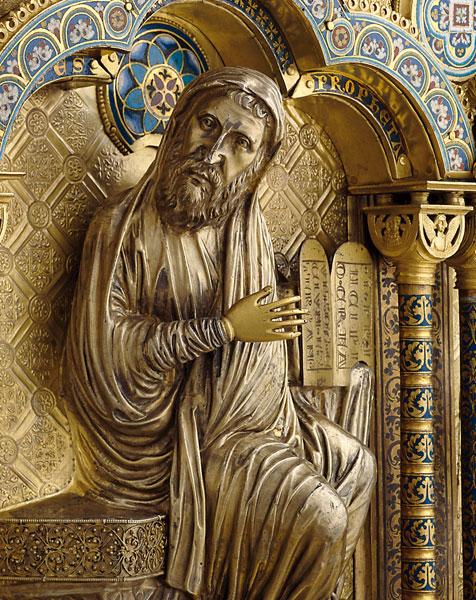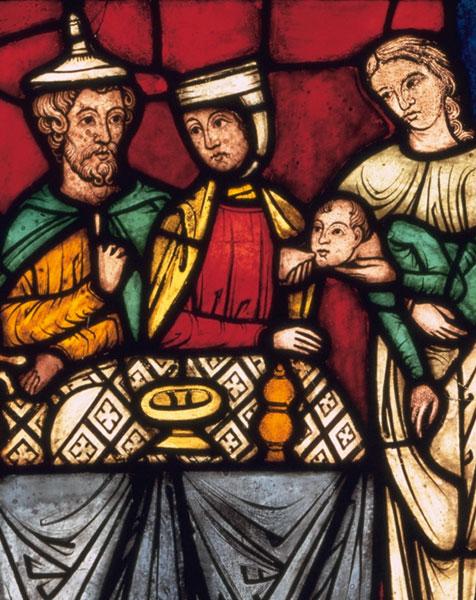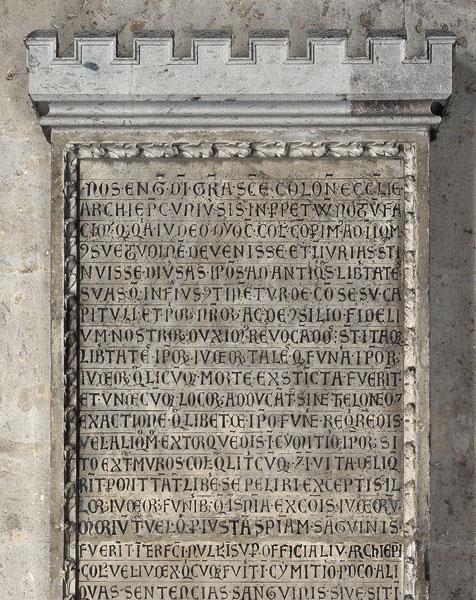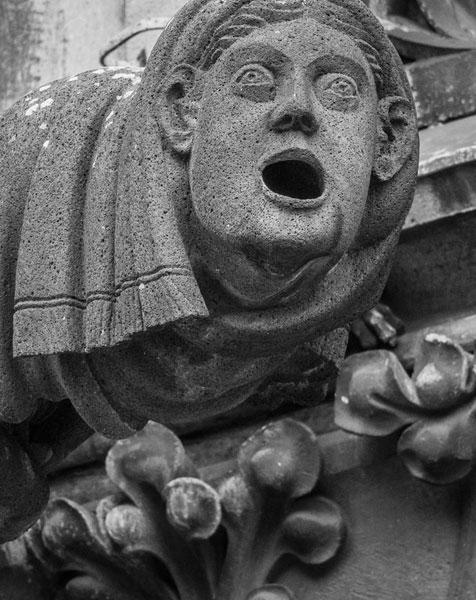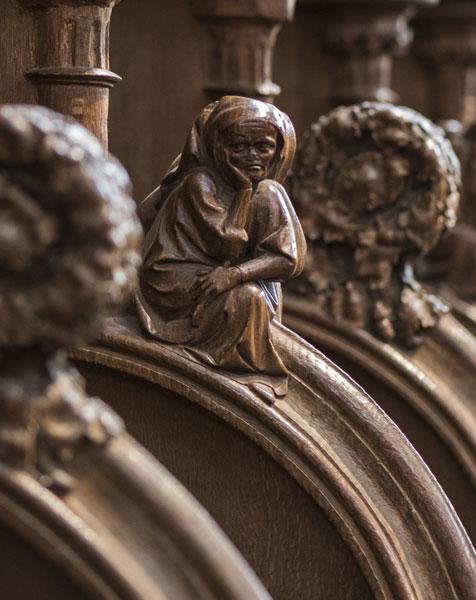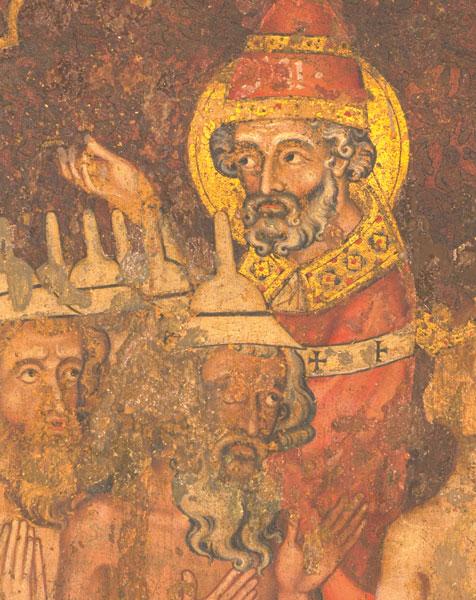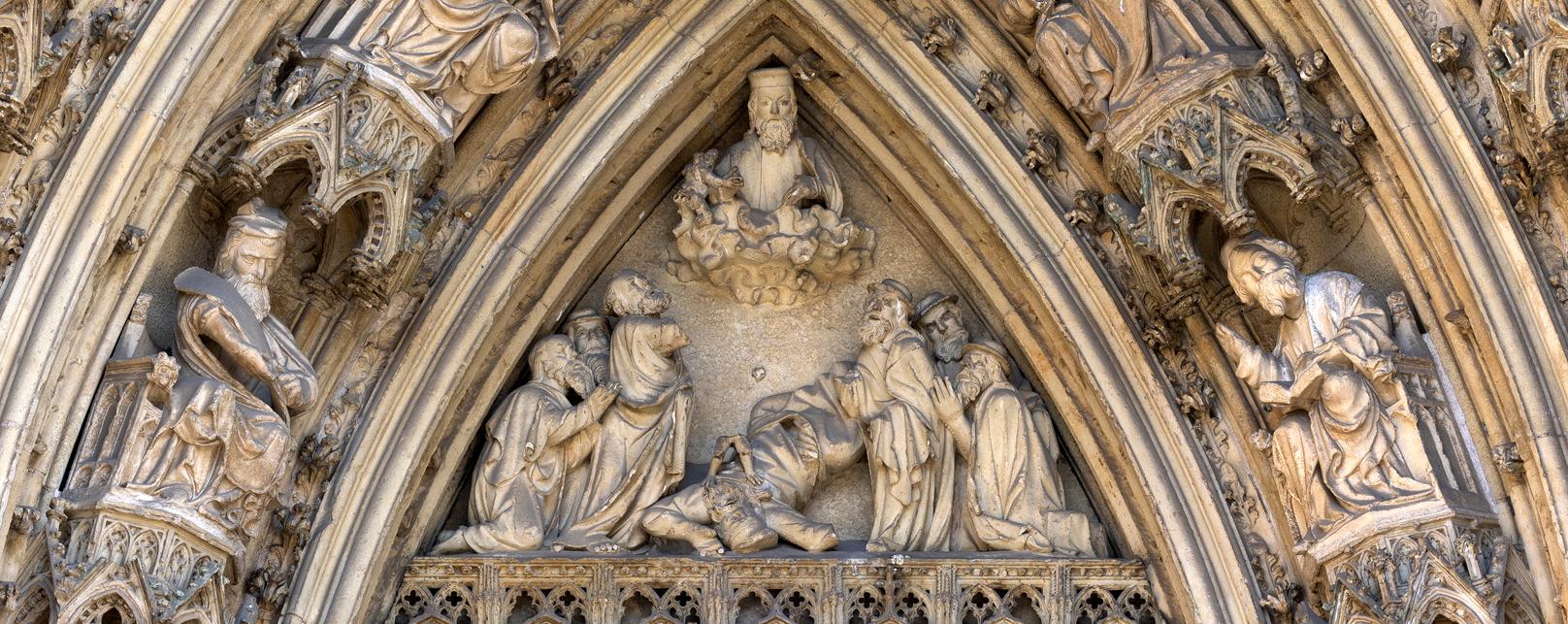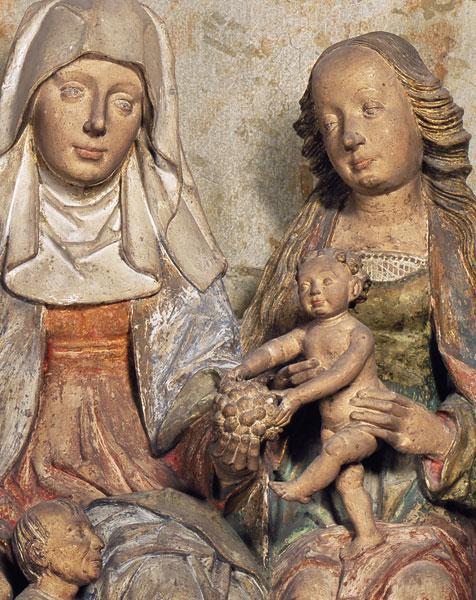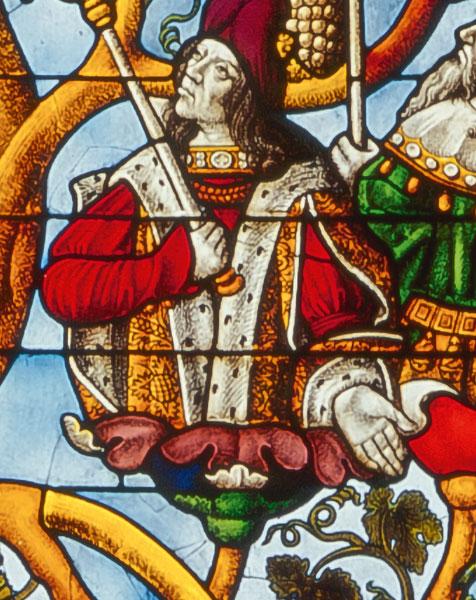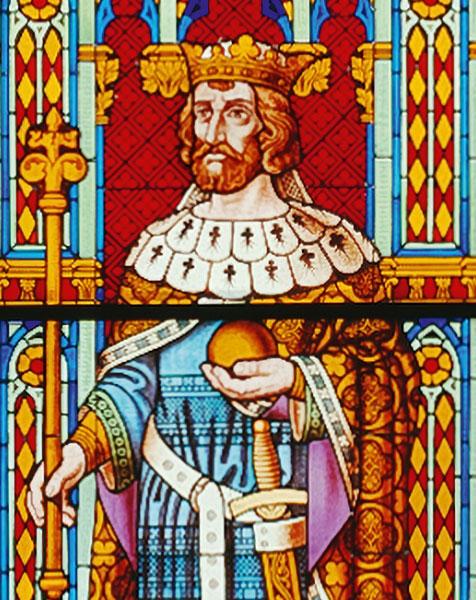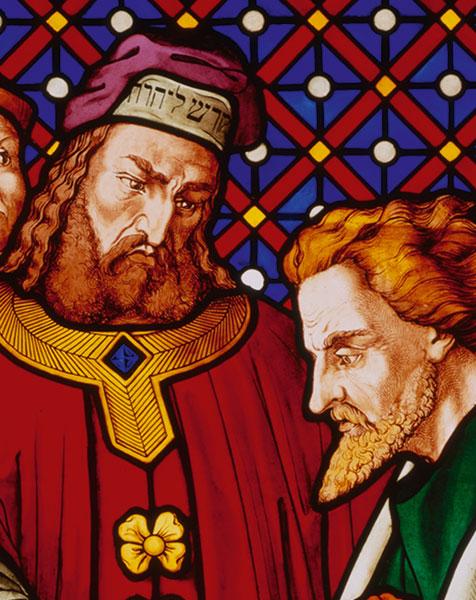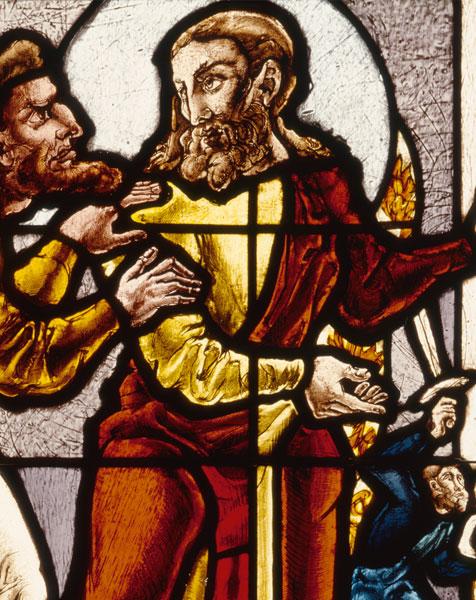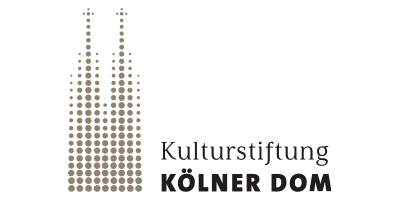
Cologne Cathedral and 'The Jews'-The Stations of the Cross
Stations of the Cross, which initially often had seven and later 14 stations, depicting the Passion of Christ from the condemnation of Christ by Pilate to the laying of Christ in the sepulchre, first appeared in the fifteenth century as depictions of the places where Christ suffered along the Via Dolorosa (or Via Crucis) in Jerusalem. Initially installed in the open air, the Stations of the Cross, which were used for devotional purposes, have been an integral part of the inventory of Catholic churches since the eighteenth century.
The Stations of the Cross in Cologne Cathedral were created between 1893 and 1898 by the Cologne-born, Dutch sculptor Friedrich Wilhelm Mengelberg. Twelve stations are situated in the Medieval aumbries in the nave. The stations depicting Christ's body being taken down from the cross and the laying of his body in the sepulchre are situated in the tower narthices and are sculptures in the round. A group of figures dating from the late Middle Ages was recycled for the station 'Christ is laid in the sepulchre'.
Depictions of the Passion of Christ in the Middle Ages often tended to include anti-Jewish imagery as a result of the Christian accusation that the Jews had committed deicide. Two reliefs that are part of the Stations of the Cross in Cologne Cathedral feature a number of aspects that can be viewed as anti-Jewish. In the first station (the condemnation of Christ by Pilate), the high priest stands immediately to the left of Pilate, who is washing his hands to illustrate his belief that he was innocent of the death of Christ. The high priest is obviously intended to be seen as the antipode to Pilate's wife, who stands to the right of the governor and pleaded for Christ's release. In the second station (Christ is laden with His cross), the high priest makes a second appearance, this time with his arm raised, which can be seen as an instruction to Christ to start walking. It would appear that the main blame for Christ's condemnation is being assigned to the high priest. Mengelberg modelled his reliefs above all on Medieval depictions of the Passion. These images were in turn based not only on the Gospels, but also on a number of apocryphal texts such as the 'Gospel of Nicodemus', which dates from the fourth century. It is, however, worth noting that Mengelberg did not give the characters in his sculptures the exaggerated facial expressions that are so typical of Medieval imagery and can be found in the faces of the thugs depicted on the Shrine of the Magi.
Matthias Demel

Behind Pilate's judgement seat stand his wife Caludia Procula and the high priest. While she stands up for Jesus, the latter seems to be in favour of his condemnation.



